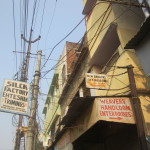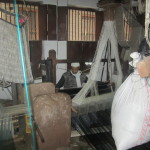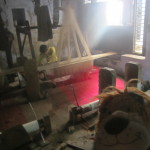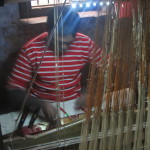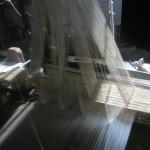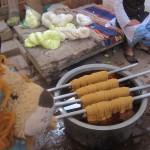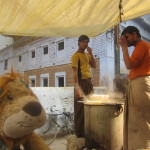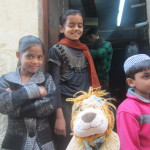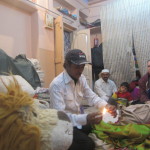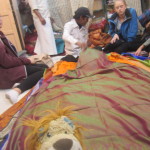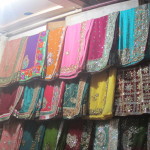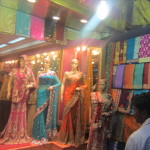After catching an overnight train from Jhansi to Varanasi (See the blog ‘Lewis travels on the famous Indian Railways‘), Lewis arrived in the hotel feeling very tired and hungry. Helen ordered some baked beans on toast but they were unlike any baked beans that she had ever tasted – they almost tasted as if they had been curried! She couldn’t eat them so in the end ordered ice-cream and coffee instead!
Not long after, the pair set off again with the rest of the tour group to discover a part of Varanasi’s cultural heritage – that of silk weaving. Here they saw the traditional looms in back alley-ways, saw how the silk is dyed and even saw a ‘flame test’ to check if a scarf is really made of silk. If the threads burn and don’t smell of plastic, then it is real silk. Lewis the Lion thought that the traditional handmade silks were just beautiful and Helen got rather carried away as she bought gifts of silk scarves, pashminas, a table-cloth and even cushion covers! He could now understand why silk was so expensive when he saw the painstaking work of the weavers. A large piece of intrict fabric could take many months to make.
Check out Lewis the Lion’s photo gallery below to see the silk weavers of Varanasi.
- Traditional signs in Varanasi
- The weaving looms in the silk rooms of Varanasi
- Lewis watches as the weaver weaves a traditional, red-silk sari for a wedding
- A traditional Varanasi weaver at work
- Traditional silk looms in Varanasi
- The threads are dyed in big vats
- Lewis watches the threads being washed outside
- Lewis meets some of the weavers children in Varanasi
- Lewis gasps at the silk flame test!
- Lewis admires the silk saris being laid out before him
- Indian silk scarves and saris
- Beautiful Indian fabrics in Varanasi
If you were to design a pattern for a new silk scarf, what would it look like?

